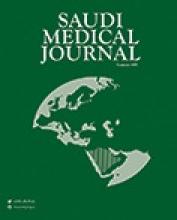Abstract
OBJECTIVE: To assess the in vitro response of Plasmodium falciparum malaria to chloroquine (CQ), sulfadoxine/pyrimethamine (SDX/PYR), Quinine (QU) and Mefloquine (MQ) and monitoring their resistance.
METHODS: In 1999 to 2000, an in vitro study was carried out in Wad Medani district in Sudan. The standard protocol of the WHO in vitro micro-test Mark II was used for the selection of the subjects, the collection of blood samples, the culture techniques, the examination of the post-culture blood slides and the interpretation of the results.
RESULTS: In vitro micro-test Mark II were performed on 62 Plasmodium falciparum isolates. Of these isolates, 42 produced successful schizonts growth. The data obtained showed that 29 of 42 isolates (69%) were CQ resistant with an effective concentrations (EC); EC50 = 399.621 nM, EC90 = 2754.145 nM and EC99 = 13284.967 nM to inhibit the schizont maturation, the values of SDX/PYR showed a flat regression line as an indication of in vitro reduced response with an EC50 = 0.262 nM, EC90 = 147.390 nM and EC99 = 25722.296 nM, and the response to the QU indicated only one of the 42 isolates (2.4%) was resistant with an EC50 = 150.085 nM, EC90 = 822.825 nM and EC99 = 3293.667 nM, while all the 42 isolates were sensitive to MQ with an EC50 = 190.763 nM, EC90 = 615.125 nM and EC99 = 1597.504 nM.
CONCLUSION: The results of this study revealed a high degree of in vitro resistance to CQ and reduced in vitro response to SDX/PYR and QU, while MQ was fully sensitive. The effective concentrations to inhibit 50, 90 and 99% of the parasite maturation were determined for antimalarial drugs efficacy monitoring surveillance in Sudan.
- Copyright: © Saudi Medical Journal
This is an open-access article distributed under the terms of the Creative Commons Attribution-Noncommercial-Share Alike 3.0 Unported, which permits unrestricted use, distribution, and reproduction in any medium, provided the original work is properly cited.






